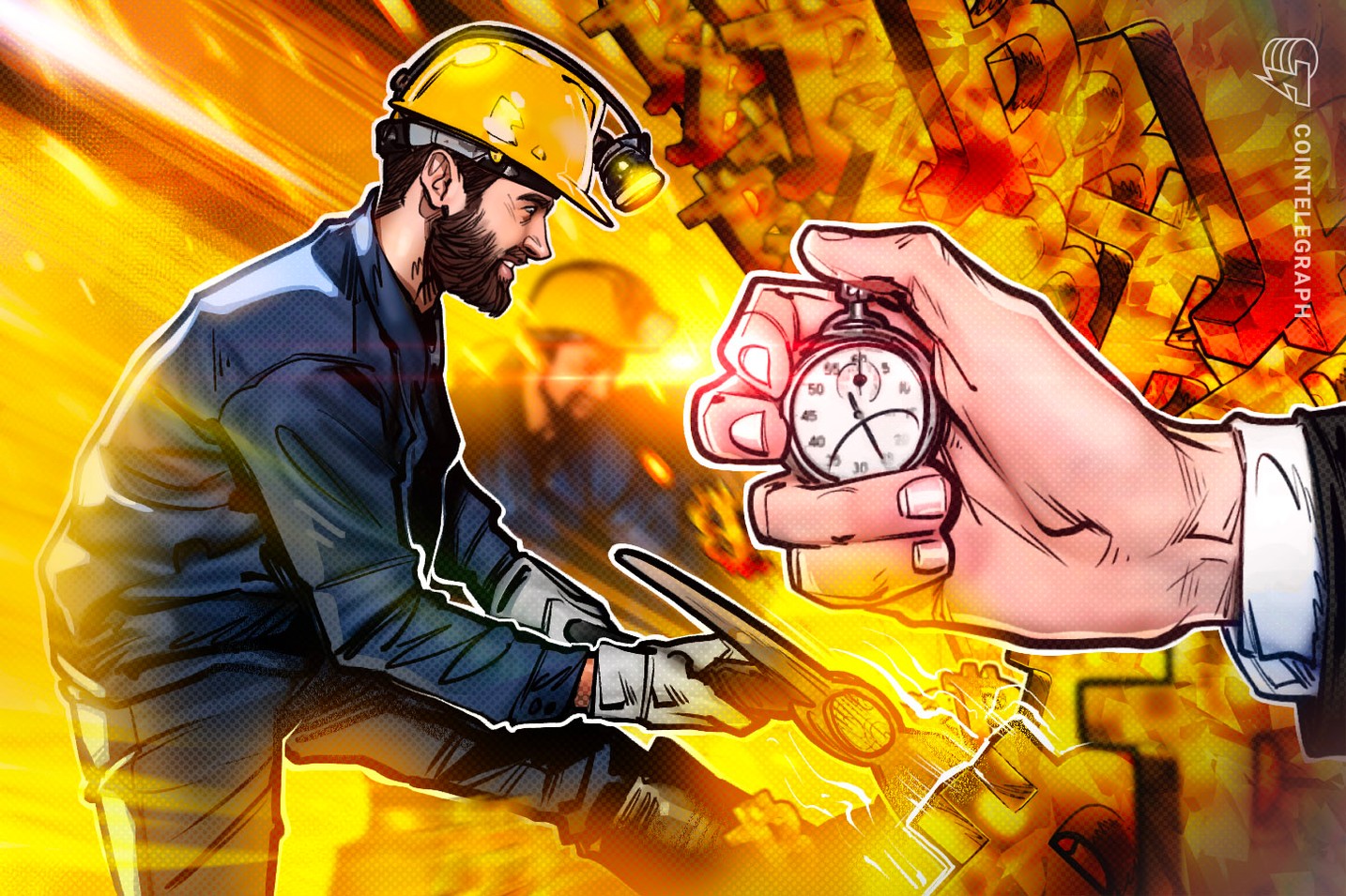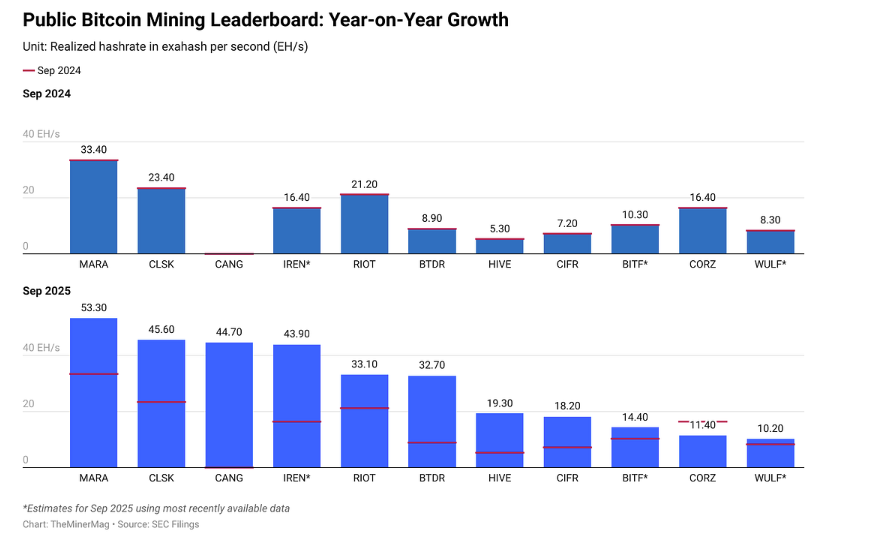
Emerging Challenges for Bitcoin Miners Post-Halving
The competition among Bitcoin miners intensifies as mid-tier players rapidly increase their hashrate and debt, altering the landscape of the industry.
The Bitcoin mining sector is witnessing a surge in competition, particularly among mid-level operators who are becoming more competitive relative to established leaders following the 2024 halving.
As per The Miner Mag, firms like Cipher Mining, Bitdeer, and HIVE Digital have made significant strides in their realized hashrate due to years of infrastructure development, constricting the gap to major players such as MARA Holdings, CleanSpark, and Cango.
“Their ascent highlights how the middle tier of public miners — once trailing far behind — has rapidly scaled production since the 2024 halving,” The Miner Mag noted in its latest Miner Weekly newsletter.
While MARA, CleanSpark, and Cango remain the top three public miners, competitors like IREN, Cipher, Bitdeer, and HIVE Digital have reported substantial annual growth in their realized hashrate.
In total, the top public miners achieved 326 EH/s (exahashes per second) in realized hashrate in September, which is more than double the rate from one year earlier, accounting for nearly one-third of Bitcoin’s overall network hashrate.
 Graph showing year-over-year growth in realized hashrate. Source: The Miner Mag
Graph showing year-over-year growth in realized hashrate. Source: The Miner Mag
Hashrate is a measure of the computational power contributed by miners to secure the Bitcoin blockchain. The realized hashrate reflects the actual on-chain mining performance — the rate at which valid blocks are created.
For publicly traded mining companies, it also indicates operational efficiency and potential revenue, making it a crucial metric ahead of the third-quarter earnings report.
Bitcoin Miners Increasingly Taking on Debt
In the quest for market domination, Bitcoin mining firms are incurring unprecedented levels of debt while investing in new hardware, artificial intelligence infrastructure, and other capital-heavy initiatives.
According to research from VanEck, debt levels in this sector have skyrocketed to $12.7 billion, a leap from just $2.1 billion a year ago. Analysts suggest that miners need to continuously invest in cutting-edge hardware to maintain their share of Bitcoin’s total hashrate and avoid being outperformed by their rivals.
Some firms are adopting AI and high-performance computing tasks to diversify revenue channels and cope with shrinking profit margins following the Bitcoin halving of 2024, which reduced block rewards to 3.125 BTC.
